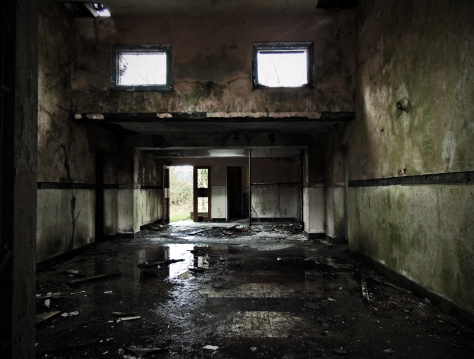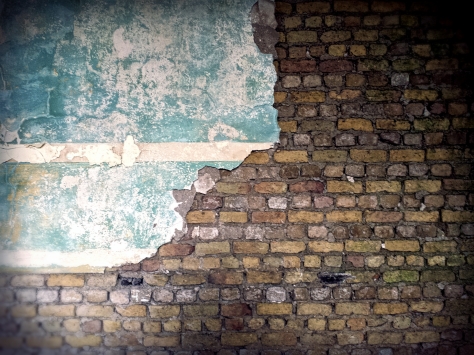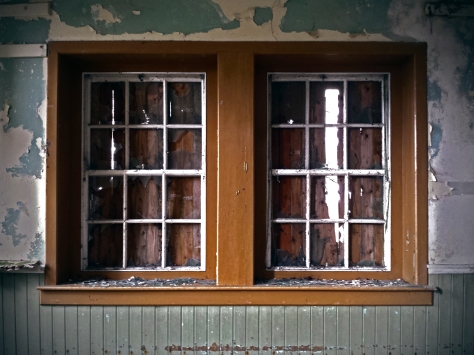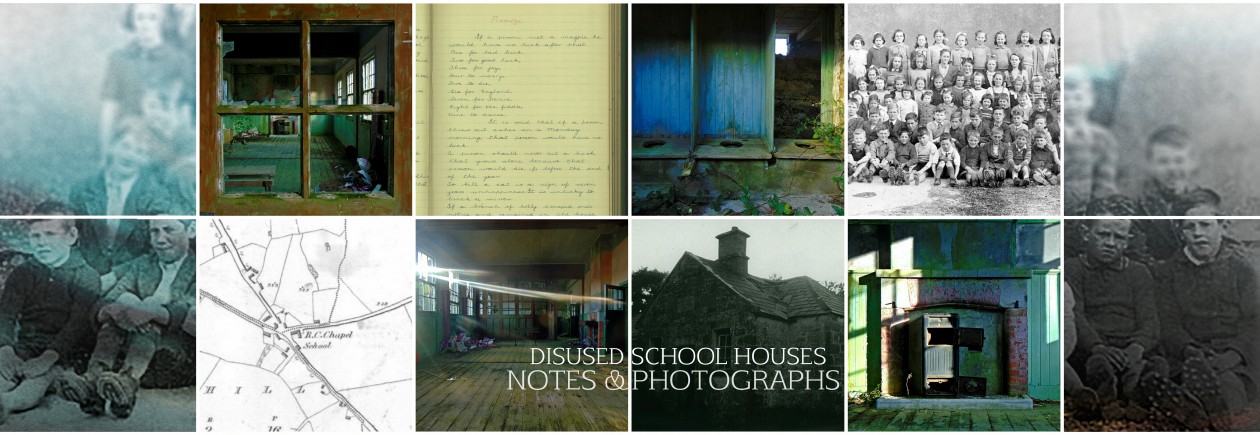Drumlish National School, Drumlish townland, Co. Longford
(dated c.1930)
NGR: 215613,285673

The village of Drumlish is situated in North County Longford, close to the Cavan and Leitrim Borders, and near to the village of Ballinamuck. Just outside the centre of the village is Old School Road where a series of old school houses have stood over the past 180 years. The First Edition Ordnance Survey map from the mid-19th century shows a school house marked at the southern side of the modern R198 where the Cairn Hill View estate is now located. The Second Edition Ordnance Survey sheet from the turn of the 20th century shows that by this time, the school had moved to opposite the old Constabulary Barracks at the junction of Old School Road and the R198. However, the school featured here post-dates both these buildings and is located to the east of the School Road Junction on the southern side of Old School Road. Here, hidden behind trees and brambles are the remains of a detached seven-bay single-storey former H-plan primary school, originally constructed c.1930 and extended c.1950.
Standing beside the building is a pebble-dashed water tower typical of 1950s school construction, while to the rear is a concrete playground shelter, which was cast in-situ. It is a particularly evocative abandoned schoolhouse, only going out of use in recent years. On entering the school through either of the cold, cast-in-situ side entrances, its functional 1950s architecture gives the interior a haunting feel, as encroaching nature gradually reclaims the building.

This was a mixed National School building – the entrance to the left of the building still displays the ‘Cailíní’ (Girls) name plaque while the entrance to the right of the school shows the ‘Buachaillí’ (Boys) plaque. Although now derelict, this former school building retains much of its fabric and its overall structure. Its present form is the result of the combination of a H-plan block, with typical tall windows and high ceilings, with later, modern extensions.

The classrooms are in various states of decay. In the older 1930s section, the peeling plasterwork reveals an almost hypnotic brick construction underneath. The original symmetrical construction is typical of the standard school buildings designed and built in great numbers by the OPW for the Board of Education during the first decades of independence. The six-room schoolhouse indicates that there was a large young population in the Drumlish area in the early twentieth century.

The original symmetrical school building is typical of the standard school buildings designed and built in great numbers by the Office of Public Works for the Board of Education during the first decades of independence. The six-room schoolhouse indicates that there was a large young population in the Drumlish area in the early-20th century.

The separate entrances for boys’ and girls’, and the division of the playgrounds and the play shelter in two, would have been typical of the separation of the sexes in rural schools during the first half of the twentieth century. This interesting and quite complex school building is an integral part of the built and social heritage of the local area.
There are two records from the 1937 Folklore Commission Schools Collection* for Drumlish National school – one for the boys school, and another for the girls school, even though both of these were written down in this building. The boys school collection was compiled by teacher Michael McGovern, while the girls school collection was compiled by teacher Brigid Lacy. Below is an extract from the Drumlish Girls School Collection describing The Land War (a period of agrarian agitation in rural Ireland in the 1870s, 1880s, and 1890s) in the locality.
If you or someone you know attended this national school, or if you have any further information about this school – please do get in touch and share any stories, anecdotes, photographs, or any other memories you may have. If you know of further schools that I could visit, please do let me know.
*In 1937 the Irish Folklore Commission, in collaboration with the Department of Education and the Irish National Teachers’ Organisation, initiated a revolutionary scheme in which schoolchildren were encouraged to collect and document folklore and local history. Over a period of eighteen months some 100,000 children in 5,000 primary schools in the twenty-six counties of the Irish Free State were encouraged to collect folklore material in their home districts.















I’m visiting Ireland right now and abandoned places fascinate me, so I’m hoping to check out this school tomorrow, but I’m having a hard time finding it on modern maps. Is there a more specific address, or is it close to a building that would be on a modern map?
LikeLiked by 1 person
Hey Kyra, enjoy your trip. At the top of the post you’ll see a National Grid Reference number. That should take you to within 1 metre of the school. 🙂
LikeLike
Never mind my previous comment; I didn’t realize at first what the NGR numbers meant, but now I think I’ve found it.
LikeLiked by 1 person
My great grandfather, James Flynn, was a National Teacher in Drumlish in 1901 at age 50. He likely had been a teacher there for many years before that. If anyone has any information about him, it would be much appreciated. He was married to Catherine (Kate) Conboy and had 11 children. His son, John, moved to America and was my grandmother’s dad.
LikeLike
Hi Jeanne – Thanks for getting in touch – I don’t have any specific information on James Flynn though i’d imagine he’s recorded in the 1901 census. At that time, I believe the school in Drumlish was located off St. Mary’s Street, opposite the Constabulary Barracks (now Church View Drive) and so not the building featured here
LikeLike
James Flynn must have worked with my great grandparents James and Mary McNamee who were both teachers at the school for many years and aged 46 and 44 respectively in 1901. The youngest McNamee child was my grandmother.
LikeLike